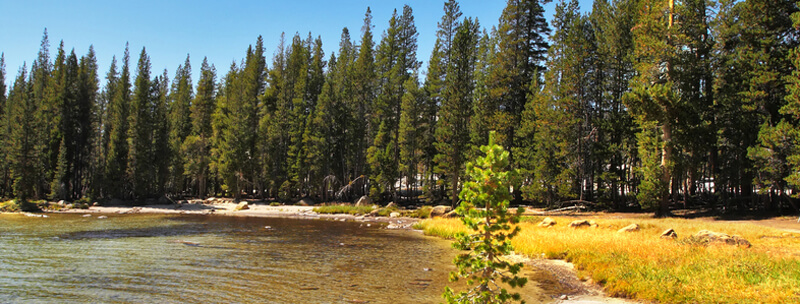NJDEP
Takes a Further Step
in Regulating Emerging
Contaminants
In
November 2017, the New Jersey Department of Environmental Protection (“NJDEP”)
set the lowest limits in the country for perfluorooctanoic acid (“PFOA”) and
perfluorononanoic acid (“PFNA”) in drinking water (See our November 8, 2017
Blog Article – NJDEP to Adopt Strict
Standards for PFOA and PFNA in Drinking Water.) Now, by
rule adoption published in the January 16, 2018 New Jersey Register, NJDEP took
a further step in regulating these emerging contaminants by adopting a
regulation that adds PFNA to the List of Hazardous Substances under the New
Jersey Spill Compensation and Control Act (the “Spill Act”). Adding PFNA to the
Hazardous Substance List not only confirms that parties may face strict
liability for cleanup and removal costs resulting from any discharge of PFNA to
the environment, but also provides a mechanism for compensating individual
property owners whose wells may be contaminated with this substance. The rule
also adopts a permanent specific Ground Water Quality Standard (“GWQS”) for
PFNA of 10 parts per trillion as well as permanent specific GWQS for 22 other
constituents.
PFNA, historically used primarily as a processing aid in emulsion
processes, is a developmental toxicant, liver toxicant, and immune system
toxicant that bioaccumulates in humans. It is extremely persistent in the
environment and is highly soluble and mobile in water.
The Department stated that it amended the Hazardous Substance List
because PFNA groundwater contamination “is anticipated to continue in the
foreseeable future due to its persistence as well as formation from precursor
compounds in the environment.” As part of its justification, the Department
referred to an extensive area of PFNA groundwater contamination affecting 20
public water supply wells and 91 private potable wells in three southwestern
New Jersey counties where NJDEP has borne the entire burden and cost of
investigating the contamination and providing potable water to affected
businesses and residences. Now that PFNA is on the Spill Act Hazardous
Substances List, major facilities that handle PFNA will be subject to all
discharge and prevention and control requirements of the Spill Act. Further,
Spill Act funding for PFNA remediation as well as payment of damage claims
resulting from PFNA discharges is also now available. Significantly, its
listing confirms that persons with Spill Act liability are affirmatively
required to remediate discharges of PFNA.
Remediating parties should keep informed of NJDEP’s efforts to
regulate contaminants of emerging concern. Even if not included on the
Hazardous Substances List, NJDEP has stated that contaminants of emerging
concern must be remediated if discharged to the environment. Given the
prevalence and persistence of many of these chemicals in the environment and
the extremely low concentrations to which they may have to be remediated,
addressing these emerging contaminants may change the approach to any site
remediation case where they are present.
New
Jersey’s Environmental and Energy Future
Under Governor Phil
Murphy
New
Jersey’s environmental and energy policies are headed in a precise, new
direction under Governor Phil Murphy. In fact, following his election in
November, Governor Murphy set a series of policy goals, which include: (1)
enhancing usage of clean energy; (2) combating climate change; (3) addressing
environmental hazards that disproportionately impact low-income communities and
communities of color; and (4) safeguarding New Jersey’s natural resources.
Governor Murphy also formed a committee to advise him on environmental issues
as he prepared to take office. This committee wasted little time and, on
January 1, 2018, published an extensive report (the “Environment and Energy
Report”) that provides recommendations for achieving Governor Murphy’s
environmental and energy goals. In the short time since his inauguration,
Governor Murphy has begun to implement these recommendations through executive
orders and key appointments to the NJDEP. As New Jerseyans and the regulated
community wait to see what this means for them, the Environment and Energy
Report and Governor Murphy’s actions to date may shed some light on what lies
ahead.
As noted above, the Environment and Energy Report covers many
topics. During his campaign, Governor Murphy focused on promoting the use of
clean energy, and the Environment and Energy Report specifically identifies a
goal of achieving 100% clean energy by 2050. Members of the New Jersey
Legislature, including Senators Bob Smith and Richard Codey and Assemblyman Tim
Eustace, have been discussing similar goals in connection with proposed
legislation but, notably, some of this legislation has set its sights on
achieving 100% clean energy usage by a much earlier date, perhaps even as early
as 2025. The Energy and Environment Report also contains a multitude of
specific recommendations for enhancing usage of clean energy including, among
others, revising New Jersey’s Energy Master Plan, updating building codes, and
removing restrictions placed on the solar power market by former-Governor Chris
Christie. The executive summary of the Environment and Energy Report also
suggests that the centerpiece of New Jersey’s clean energy future is offshore
wind, and Governor Murphy appears to have adopted this recommendation as
evidenced by the passage of one of his first executive orders, which directs
various state agencies to collaborate on the planning and implementation of
“offshore wind projects for the generation of 1,100 megawatts of electric
power, the nation’s largest such solicitation to date.” It will be interesting
to see how the implementation of this project progresses, as it will involve
significant logistical issues and the intersection of numerous State and
federal laws.
The Environment and Energy Report also focuses on “safeguarding”
New Jersey’s natural resources through a variety of activities, including
reconsidering recent revisions to environmental regulations, ensuring public
access to beaches, promoting smart growth, and supporting the listing of the
Hackensack River as a Superfund site. For instance, the report specifically
suggests that Governor Murphy direct the NJDEP to reconsider recent revisions
to regulations impacting the waters of New Jersey. The Environment and Energy
Report also recommends that the Governor and the NJDEP conduct a thorough
review of New Jersey’s Licensed Site Remediation Professionals (“LSRP”)
program, which allows private, licensed consultants to supervise the
remediation of contaminated sites. The report does not advocate for the
elimination of this program, as some had feared, but it does suggest that there
is room for improvement to ensure public health is protected and to make the
program more efficient. New Jersey Legislators and interested stakeholders
already had been discussing improvements to the LSRP program prior to Governor
Murphy’s election, and these talks are expected to result in proposed
legislation in the coming year. Separately, the Environment and Energy Report
also previews a potential shift in policy relating to Natural Resource Damages
(“NRD”), recommending that the State “aggressively pursue” NRD cases to
compensate for the loss of natural resources as a result of contamination and
to direct monies for restoration of affected communities.
In order to carry out some of these goals, Governor Murphy has
nominated Catherine McCabe as the Commissioner of the NJDEP. McCabe is a
veteran public administrator and environmental lawyer who has spent more than
twenty years working on environmental issues at the federal level for the
United States Department of Justice and Environmental Protection Agency. Debbie
Mans, a veteran environmental advocate and lawyer who most recently served
as the head of NY/NJ Baykeeper, a water rights group focusing on the NY/NJ
Harbor, has been tapped as Deputy Commissioner.
Governor Murphy and his appointees will shape the future of New
Jersey’s environmental and energy policy over at least the next four years. The
topics discussed in the Environment and Energy Report, including the examples
noted above, suggest a new direction for New Jersey, as well as the potential
for expansion of environmental regulation and enforcement activities.
Changes to HDSRF Limit Funds Available for Site Remediation
Earlier this year, New Jersey passed legislation (Assembly Bill 1954) that changed the availability of certain funding to public and private entities under the Hazardous Discharge Site Remediation Fund (“HDSRF” or the “Fund”). The HDSRF program provides grants and loans to public entities and certain private entities that require financial assistance to investigate and remediate suspected or known contaminated sites. The HDSRF program is funded through the New Jersey Corporate Business Tax and is jointly administered through a partnership between the NJDEP and the New Jersey Economic Development Authority (“NJEDA”).
Below is a list of notable changes to the HDSRF program as a result of Assembly Bill 1954:
- The 50% matching grants for “innocent parties” to complete site remediation activities (i.e. preliminary assessment, site investigation, remedial investigation and remedial action), which were previously capped at $1 million, have been completely eliminated from the program.
- The 25% matching grants previously available for “innovative technology” and “limited restricted use” remedial actions have been eliminated from the program.
- The amount of annual grant funding available to municipalities, counties and redevelopment entities has been reduced from $3 million to $2 million.
- The additional annual grant funding available for projects in a Brownfield Development Area (“BDA”) has been reduced from $2 million to $1 million.
- The statewide annual award for projects involving redevelopment of property for recreation and conservation, affordable housing and renewable energy, previously capped at $5 million, has been reduced to $2.5 million.
- The annual loan cap for any person that is not a municipality, county or redevelopment entity, which was previously set at $1 million, has been reduced to $500,000.
- For previous applicants, no new awards will be approved until the applicant demonstrates that it has expended or will expend the full amount of any previous funding awarded for the same property.
The amendments to the HDSRF program also place timeframes on the completion of certain remediation tasks for which the funds were awarded, including a requirement to expend the funds for a preliminary assessment or site investigation within two (2) years of the date of the award and to expend the funds for a remedial investigation within five (5) years of the award date. If the funding is not used within these timeframes, the award will be cancelled. In addition, the new law has changed the priority of funding awarded from the HDSRF so that properties owned by municipalities in BDAs are given priority over sites in Planning Area 1 (Metropolitan) and Planning Area 2 (Suburban) pursuant to the State Planning Act. Properties where contamination poses an imminent and significant threat to human health, a drinking water source or a sensitive or significant ecological resource are still given first priority. The NJEDA has also been tasked with developing criteria requiring municipalities, counties and redevelopment entities to develop a property within three (3) years of the completion of the remediation. Interested parties should review these changes carefully to determine how they may impact their ability to finance remediation and brownfields redevelopment.
NYSDEC
Requiring Site Owners
to Investigate Emerging
Contaminants
Over the
past few years, a number of state agencies have begun to take steps to address
emerging contaminants like per- and -polyfluororalkyl substances (“PFAS”) and
1,4 dioxane. Just this past January, we reported on our blog that the NJDEP set
the most stringent limits in the country for perfluorooctanoic acid (“PFOA”)
and perfluorononanoic acid (“PFNA”) in drinking water and adopted a regulation
that added PFNA to the List of Hazardous Substances under the New Jersey Spill
Compensation and Control Act (See our January 30, 2018 Blog Article NJDEP Takes a Further
Step in Regulating Emerging Contaminants reprinted at
the top of this Update). Now the New York State Department of Environmental
Conservation (“NYSDEC”) is undertaking a statewide evaluation of remediation
sites to better understand the risk posed by certain emerging contaminants. As
part of this effort, the NYSDEC is requesting that owners of certain
remediation sites throughout New York investigate the presence of PFAS and 1,4
dioxane in groundwater. The NYSDEC has specifically noted that sampling and
analysis of these compounds also has been integrated into standard practice for
all environmental site remediations going forward.
The NYSDEC has begun issuing letters to notify owners of
remediation sites of the new investigation requirements and to request that
site owners sample their properties for certain emerging contaminants within a
specified timeframe. Attached to the letters is a guidance document
(Groundwater Sampling for Emerging Contaminants – February 2018) that describes
the NYSDEC’s implementation of this new program and sets forth recommended
sampling analysis and reporting protocols and procedures. The letters ask the
owners to contact the NYSDEC to discuss the scope of the requested groundwater
sampling within ten (10) business days after receipt. If the owner declines,
the NYSDEC may perform the sampling itself.
This new initiative has the potential to significantly impact a
party’s remediation obligations if emerging contaminants are found above
reporting limits. The NYSDEC may seek to reopen closed sites or expand the
scope of existing investigations and cleanups. The sites that are the most
likely to be identified by the NYSDEC for sampling are those sites that have
the potential for emerging contaminant contamination, like fire training
centers, bulk storage facilities, landfills, airports, and Department of
Defense (DoD) facilities. As the NYSDEC continues to develop its understanding
of the potential risks associated with emerging contaminants, new requirements
may be on the horizon.
WOTUS
Rule Remains Uncertain
Even After U.S. Supreme
Court Ruling
During the
Obama Administration, the United States Environmental Protection Agency
(“USEPA”) revised the Clean Water Act definition of Waters of the United States
(“WOTUS Rule”) to broaden (to some overly so) federal protection of certain
waterbodies. The WOTUS Rule sparked numerous lawsuits in a number of federal
District Courts and Courts of Appeals. In January 2018 the Supreme Court
decided in National Association of Manufacturers v. Department of Defense,
138 S. Ct. 617 (2018), that challenges to the WOTUS Rule are properly brought
in federal District Courts and not in Courts of Appeals, disagreeing with the
government’s argument that the Court of Appeals was the proper venue to hear
challenges to the WOTUS Rule under the Clean Water Act.
Across the country, certain parties challenging the WOTUS Rule
filed suits in District Courts and others filed petitions in Courts of Appeals.
Parties that filed petitions in the Court of Appeals argued that the language
of the Clean Water Act allowed them to bring initial challenges to the WOTUS
Rule at the appellate level. The Courts of Appeals cases were consolidated and
transferred to the Sixth Circuit where the Sixth Circuit was asked to decide
whether it was the proper venue for such cases. After reviewing the language of
the Clean Water Act, the Sixth Circuit found it had jurisdiction over the WOTUS
Rule challenges. The National Association of Manufacturers appealed this Sixth
Circuit decision to the Supreme Court and the Supreme Court overturned the
Sixth Circuit.
The government argued before the Supreme Court that challenges to
the WOTUS Rule fell under two specifically identified conditions set forth in
the Clean Water Act where a party can first file in the Court of Appeals rather
than the District Court. These were Subparagraphs E and F of section 1369(b)(1)
of the Act. The Supreme Court reviewed both Subparagraphs and disagreed.
Subparagraph E grants the Courts of Appeals exclusive jurisdiction
to review an action by the USEPA in “approving or promulgating any effluent
limitation or other limitation.” The Court found that the WOTUS Rule was not an
“effluent limitation” in that it did not impose a restriction on pollutants
that could be discharged into navigable waters. Instead, according to the
Court, the WOTUS Rule is purely a regulatory definition for a statutory term.
The Court also found that “other limitation” as used in Subparagraph E must be
read to be similar in kind to an “effluent limitation.” Likewise, the Court
refused to read “other limitation” to include the WOTUS Rule.
The Court also found that the WOTUS Rule does not fall under
Subparagraph F, which provides Courts of Appeals with exclusive jurisdiction to
review any USEPA action “in issuing or denying any permit.” The Court rejected
the government’s argument that the WOTUS Rule was functionally similar to
“issuing or denying permits.” Rather, the Court found that the WOTUS Rule
“makes no decision whatsoever on individual permit applications.”
The government also maintained that for public policy reasons the
Courts of Appeals should hear the WOTUS Rule challenges, alleging that it would
be more efficient and promote uniformity with respect to the interpretation of
the WOTUS Rule. The Court acknowledged that the government’s argument was
reasonable, but found that Congress did not authorize this course of action,
and therefore, neither could the Court.
Accordingly, the Supreme Court found that the District Courts have
jurisdiction to hear challenges to the WOTUS Rule. Although the Court’s
reasoning is sound, its decision may lead to varying rulings across the
country. In response to this decision, the USEPA suspended the WOTUS Rule for
two years allegedly “due to regulatory uncertainty.” This action by the USEPA
has only sparked new litigation questioning the legality of the USEPA’s actions
to suspend the Rule. At this time, the only thing that can be said with
confidence about the WOTUS Rule is that its implementation and outcome
continues to be the subject of litigation and uncertainty.
Environmental Group Ranked in Band One
in Chambers USA 2018 Rankings
Riker Danzig’s Environmental Practice has again been honored with a Band 1 ranking in the Chambers USA Guide this year. Our group has been consistently ranked in the top tiers of Chambers USA since the publication’s inception and in “Band 1” since 2010. Many of our environmental attorneys are also recognized individually in the Guide. Chambers continues to be one of the most well-respected attorney ranking guides, due to its in-depth research and the unbiased and independent nature of its reporting.
Following are highlights from the editorial commentary, as published in Chambers USA.
Riker Danzig’s Environment Practice (Band 1):
A Chambers’ source notes: “They are a superb and extremely sophisticated environmental group.”
Other quotes from Chambers regarding Riker Danzig’s Environmental Practice:
- “Superb environmental group with a focus on New Jersey remediation programs.”
- “Also adept at handling Superfund, natural resource damage
- and multiparty cost recovery litigation.”
- “Offers expertise across multiple industries, including banking, real estate, gaming and energy.”
- “Skilled at advising on real estate and redevelopment issues.”
Individual Attorney Rankings:
Dennis Krumholz (Band 1) Noted as leading the environmental practice and “well regarded for his strength across a wide range of environmental litigation and regulatory matters.” Peers comment: “He is very smart, very reasonable and easy to deal with.”
Samuel Moulthrop (Band 1) Noted as a “superb” attorney who “is extremely versatile. You can ask him any question; he knows everything,” says one source, with another adding: “His input is always very valuable and he is very good at seeing the bigger picture.” He is widely respected for his significant experience across a range of complex environment disputes. He is particularly noted for expertise in government enforcement and compliance litigation.
Steve Senior (Band 2) is well regarded for his experience across regulatory and transactional matters. He regularly handles site cleanup, brownfield redevelopment and ISRA matters. A client remarks: “He is even-keeled and unflappable. He not only has great legal strategy, but great people strategy too.”
Jeff Wagenbach (Band 3) has extensive experience across an array of environment issues, including Superfund, remediation costs and regulatory compliance matters. An impressed source reports: “He is extremely knowledgeable and offers an in-depth understanding of environmental matters.”
Marilynn Greenberg (Band 3) Chambers states she is “an exceptional, responsive and diligent attorney.” She is noted for her considerable experience across an array of environmental transactional and regulatory matters, including brownfield and hazardous material issues.
Alexa Richman-La Londe (Band 3) has significant experience handling environmental litigation, including Superfund and remediation cost disputes. Clients report: “She is wonderful: She is able to navigate through challenging situations, drills down on what is important and is commercially oriented.”
Jaan Haus (Associates to watch) “is a fantastic lawyer and his work is exemplary,” say satisfied clients. He is highlighted for particular skill across complex site remediation concerns, as well as advising on permitting and due diligence matters.
Many of Riker Danzig’s other practice areas and attorneys have also been ranked in the prestigious guide. Full rankings, commentary, and methodology are available at Chambers. See www.riker.com/awards-and-honors-methodology. Above quotes from Chambers USA 2018. No aspect of this communication has been approved by the Supreme Court of New Jersey.
New Jersey Legislative Update
Recently Enacted Environmental Laws
P.L. 2018, c.3: (S598) Requires New Jersey to join U.S. Climate Alliance to uphold Paris Climate Accord.
P.L. 2018, c.7: (A839) Prohibits offshore oil and gas exploration, development and production in State waters and issuance of NJDEP permits and approvals for activities associated with offshore oil and gas activities.
P.L. 2018, c.17: (A3723/S2314) Establishes and modifies clean energy and energy efficiency programs; modifies State’s solar renewable energy portfolio standards.
Recently Introduced Environmental Bills
A3116/S879: Amends definition of “existing major hazardous waste facility” in Major Hazardous Waste Facilities Siting Act. Status: Introduced; Passed Senate.
A1903/A2081: Provides for priority consideration, by DCA, NJDEP, DOT and municipalities, of permit applications for green building projects. Status: Introduced; Referred to Assembly Environment and Solid Waste Committee.
A1819/A5104: Prohibits NJDEP from amending certain regulations to be less stringent than certain federal regulations. Status: Introduced; Referred to Assembly Environment and Solid Waste Committee.
A1490/A1776: Requires assessment of administrative penalty amount of administrative law judge for environmental violations. Status: Introduced; Referred to Assembly Judiciary Committee.
A1341/A4010: Prohibits inclusion of provision in agreements, contracts, or settlements related to pipeline siting or hydraulic fracturing or “fracking,” that would restrict parties from disclosing information, statements, or assertions related to public health or safety. Status: Introduced; Referred to Assembly Environment and Solid Waste Committee.
A1329/A2627: Prohibits treatment, discharge, disposal, application to roadway, or storage of wastewater solids, sludge, drill cuttings or other byproducts from natural gas exploration or production using hydraulic fracturing. Status: Introduced; Referred to Assembly Environment and Solid Waste Committee.
A1328/A2625: Prohibits drilling technique of hydraulic fracturing. Status: Introduced; Referred to Assembly Environment and Solid Waste Committee.
A1298/A1751: Requires NJDEP to submit annual financial report on status of certain fund balances. Status: Introduced; Referred to Assembly Environment and Solid Waste Committee.
A499/A693: Requires State compensation of property owners for certain property devalued due to certain environmental laws; and requires State agencies to evaluate proposed administrative rules for potential to constitute taking of real property. Status: Introduced; Referred to Assembly Environment and Solid Waste Committee.
A494/S2476: Amends law to limit NJDEP’s direct oversight of remediation of portion of contaminated site under certain circumstances. Status: Introduced; Referred to Assembly Environment and Solid Waste Committee.
A2923/S2309: Requires Site Improvement Advisory Board to offer recommendations to encourage sustainable development. Status: Introduced; Referred to Assembly Housing and Community Development Committee.
A2043/A1623: Requires use of pervious concrete by State agencies under certain circumstances. Status: Introduced; Referred to Assembly State and Local Government Committee.
A2417/A5259: Creates “Coastal Climate Change Commission” to develop recommendations for statewide policies presented by issues and challenges of climate change. Status: Introduced; Referred to Assembly Environment and Solid Waste Committee.
SR55/SR22: Opposes PennEast Pipeline Project in NJ. Status: Introduced; Transferred from State Environmental and Energy Committee to Senate Economic Growth Committee.
New Jersey Governor Signs Measures to Advance State’s Clean Energy Economy
On May 23, 2018, Governor Phil Murphy signed several legislative initiatives as well as an executive order that have injected new life into New Jersey’s clean energy programs.
The Renewable Energy Bill (A-3723) requires that 21% of energy sold in the state be from Class I renewable energy sources by 2020; 35% by 2025 and 50% by 2030 – making these standards among the most ambitious in the country. Governor Murphy also signed Executive Order No. 28, which establishes an updated Energy Master Plan (“EMP”) for the conversion of the state’s energy production profile, and the provision of 100% clean energy by 2050. The delivery of the EMP is mandated for June 1, 2019.
In addition, Governor Murphy signed Bill S-2313, which establishes a Zero Emissions Certificate (“ZEC”) program to maintain nuclear energy as New Jersey’s largest source of carbon free energy. In order to participate in the ZEC program, a plant would be required to demonstrate that it 1) makes a significant contribution to the state’s air quality, 2) is at risk of closure within three years, and 3) is not receiving funding from any other federal, regional or state source that would negate the need for the ZEC.
Further information can be found at www.nj.dep.gov.












